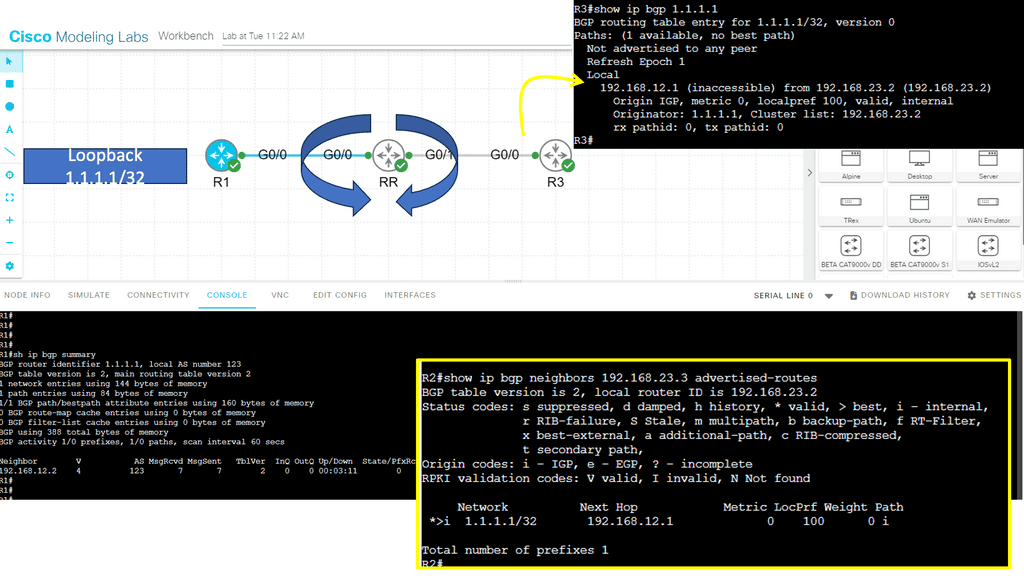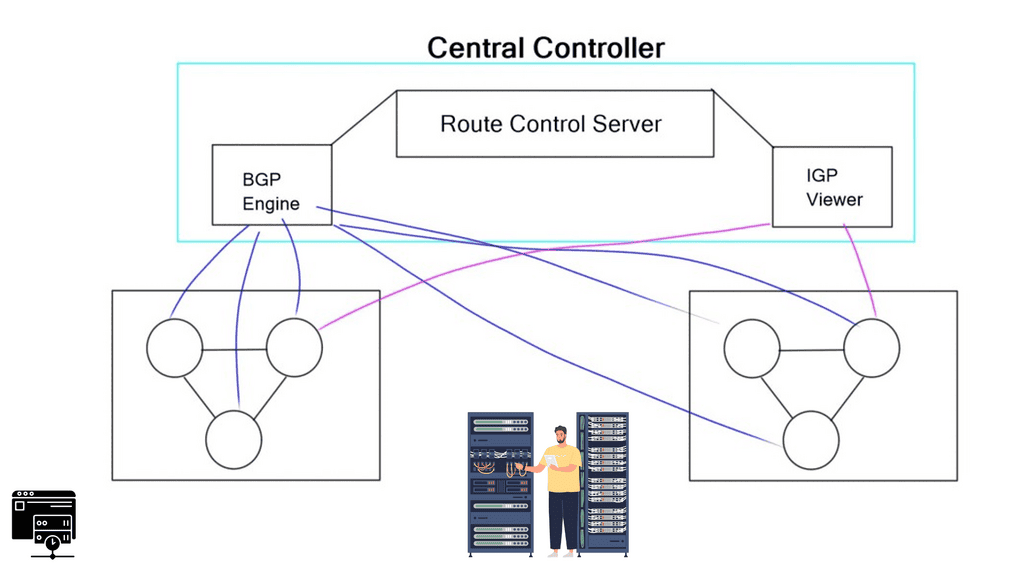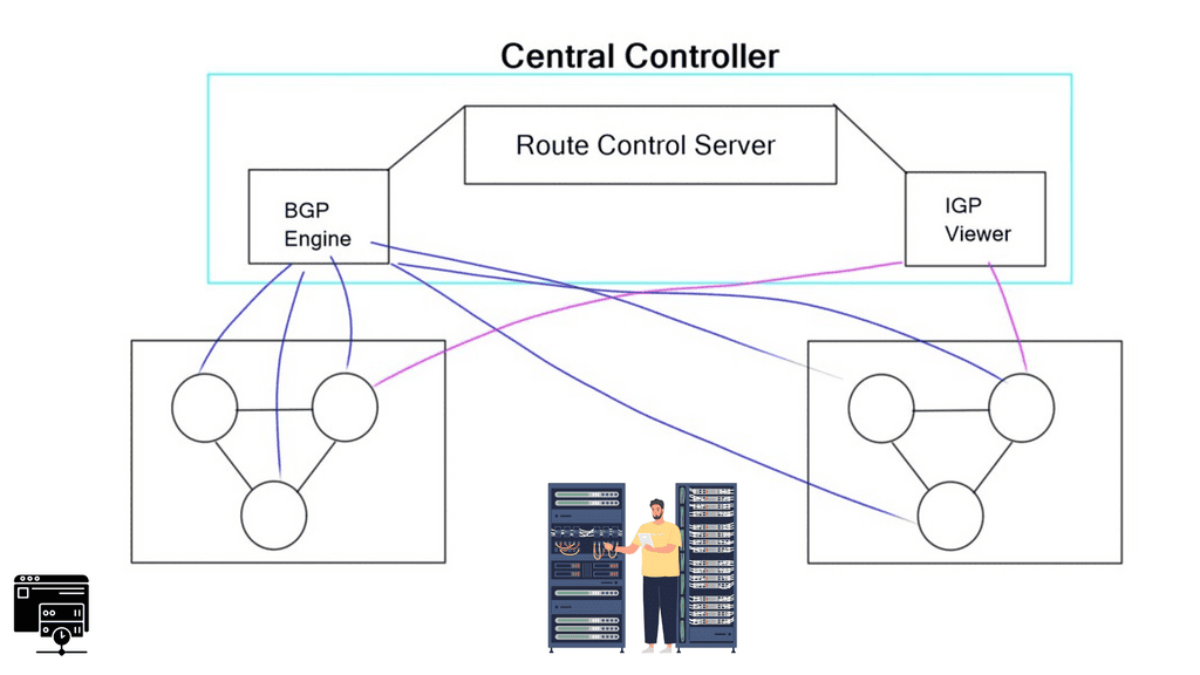Routing Control Platfrom
In today's fast-paced digital world, efficient network management is crucial for businesses and organizations. One technology that has revolutionized routing and network control is the Routing Control Platform (RCP). In this blog post, we will delve into the world of RCPs, exploring their features, benefits, and their potential impact on network infrastructure.
A Routing Control Platform is a software-based solution that offers centralized control and management of network routing. It acts as the brain behind the routing decisions, providing a unified platform for configuring, monitoring, and optimizing routing policies. By abstracting the underlying network infrastructure, RCPs bring simplicity and agility to network management.
1. Policy-based Routing: RCPs allow administrators to define routing policies based on various parameters such as network conditions, traffic patterns, and security requirements. This granular control enables efficient traffic engineering and enhances network performance.
2. Centralized Management: With RCPs, network administrators gain a centralized view and control of routing across multiple network devices. This simplifies configuration management, reduces complexity, and streamlines operations.
3. Dynamic Routing Adaptability: RCPs enable dynamic routing adaptability, which means they can automatically adjust routing decisions based on real-time network conditions. This ensures optimal traffic routing and improves network resiliency.
1. Enhanced Network Performance: RCPs optimize routing decisions, leading to improved network performance, reduced latency, and increased throughput. This translates into better user experiences and improved productivity.
2. Increased Flexibility: With RCPs, network administrators can easily adapt routing policies to changing business needs. This flexibility allows for rapid deployment of new services, efficient traffic engineering, and seamless integration with emerging technologies.
3. Simplified Network Management: RCPs provide a unified platform for managing and controlling routing across diverse network devices. This simplifies network management, reduces operational overhead, and enhances scalability.
1. Scalability: Ensure that the RCP can handle the scale of your network, supporting a large number of devices and routing policies without compromising performance.
2. Integration Capabilities: Look for RCPs that seamlessly integrate with your existing network infrastructure, including routers, switches, and SDN controllers. This ensures a smooth transition and minimizes disruption.
3. Security: Verify that the RCP offers robust security features, including authentication, access control, and encryption. Network security should be a top priority when implementing an RCP.
Conclusion: Routing Control Platforms have emerged as a game-changer in network management, offering centralized control, flexibility, and improved performance. By leveraging the power of RCPs, organizations can optimize their network infrastructure, adapt to changing demands, and stay ahead in the digital era.
Mattt Conran
Highlights: Routing Control Platfrom
Centralized Forwarding Solution
The Routing Control Platform (RCP) is a centralized forwarding solution, similar to BGP SDN that enables the collection of a network topology map, running an algorithm, and selecting the preferred BGP route for each router in an Autonomous System (AS). It does this by peering both the IGP platform and iBGP to neighboring routers and communicating the preferred routes using unmodified iBGP.
It acts similarly to an enhanced route reflector and does not sit in the data path. It is a control plane device, separate from the IP forwarding plane. The RCP protocol exhibits the accuracy of a full mesh iBGP design and scalability enhancements of route reflection without sacrificing route selection correctness.
Hot Potato Routing
A potential issue with route reflection is that AS exit best path selection (hot potato routing) is performed by route reflectors from their IGP reference point, which in turn gets propagated to all RR clients scattered throughout the network. As a result, the best path selected may not be optimal for many RR clients as it depends on where the RR client is logically placed in the network.
You may also encounter MED-induced route oscillations. The Routing Control Platform aims to solve this problem.
Before you proceed, you may find the following blog BGP of interest:
Routing Control. Key Routing Control Platform Discussion Points: |
|
Back to Basics Routing Control Platform
Routing Foundations
A network carries traffic where traffic flows from a start node to an end node; generally, we refer to the start node as the source node and the end node as the destination node. We must pick a path or route from the source node to the destination node. A route can be set up manually; such a route is static. Or we can have a dynamic routing protocol, such as an IGP or EGP.
With dynamic routing protocols, we have to use a routing algorithm. The role of the routing algorithm is to determine a route. Each routing algorithm will have different ways of choosing a path. Finally, a network can be expressed as a graph by mapping each node to a unique vertex in the graph, where links between network nodes are represented by edges connecting the corresponding vertices. Each edge can carry one or more weights; such weights may depict cost, delay, bandwidth, and so on. Many of these methods are now enhanced with an IGP platform and different types of routing control.
A key point: Replacing iBGP with the OpenFlow protocol
There are proposed enhancements to the Routing Control Platform by replacing iBGP with the OpenFlow protocol, providing additional capabilities beyond next-hop forwarding. This may be useful for a BGP-free edge core and will be addressed later. The following discusses the original Routing Control Platform proposed by Princeton University and AT&T Labs-Research.
Benefits of Routing Control Platforms:
1. Enhanced Network Performance:
RCPs offer granular control over routing decisions, allowing network administrators to optimize traffic flow and minimize latency. By intelligently distributing traffic across multiple paths, RCPs ensure that network resources are utilized efficiently, improving network performance and end-user experience.
2. Improved Network Resilience:
RCPs enable organizations to build highly resilient networks by implementing diverse routing paths. In the event of a network failure or congestion, RCPs automatically reroute traffic to alternative paths, ensuring uninterrupted connectivity and minimizing downtime.
3. Increased Security:
With the rise in cyber threats, organizations’ network security has become a top priority. RCPs provide advanced security features, such as traffic filtering and access control, to protect against malicious activities. By centralizing routing control, RCPs enable network administrators to implement robust security policies and mitigate potential risks.
4. Scalability and Flexibility:
As businesses grow and networks expand, scaling and adapting becomes crucial. RCPs offer scalability by allowing organizations to add or remove network devices seamlessly. Additionally, RCPs provide flexibility in managing routing protocols, allowing administrators to easily configure and customize routing policies based on specific business requirements.
Use Cases of Routing Control Platforms:
1. Internet Service Providers (ISPs):
ISPs can leverage RCPs to optimize network performance, enhance customer experience, and manage bandwidth effectively. RCPs allow ISPs to distribute traffic intelligently across their networks, ensuring optimal infrastructure utilization and reducing congestion.
2. Data Centers:
In data center environments, where high availability and low latency are critical, RCPs play a vital role in achieving efficient routing. By implementing RCPs, data centers can distribute traffic across multiple paths, balancing the load and minimizing response times.
3. Enterprise Networks:
Large enterprises with complex network infrastructures can benefit from RCPs to gain control over routing decisions. RCPs provide centralized management capabilities, simplifying the configuration and monitoring of routing policies across the entire network.
iBGP and eBGP
Routers within an AS exchange routes to external destinations using internal BGP (iBGP), and routers peer externally to their AS using external BGP (eBGP). All BGP speakers within a single AS must be fully meshed to propagate external destinations. For loop prevention, the original BGP design states reachability information learned from an iBGP router can not be forwarded to another iBGP router inside the full mesh. eBGP designs use AS-PATH for loop prevention. All routing protocols, not just BGP, require some mechanism to prevent loops.
With iBGP, the maximum number of iBGP hops an update can traverse is 1.
Route-reflection (RR) and confederations
To combat the scalability concerns with an iBGP full mesh design, in 1996, several alternatives, such as route reflection and confederations, were proposed. Both of these enable hierarchies within the topology. However, route reflection has drawbacks, which may result in path diversity and network performance side effects. There is a trade-off between routing correctness and scalability. With iBGP full mesh designs, if one BGP router fails, it will have a limited impact. An update travels only one i-BGP hop. However, if a route reflector fails, it has an extensive network impact. All iBGP peers peering with the route reflector are affected.
An update message may traverse multiple route reflectors with a route reflection design before reaching the desired i-BGP router. This may have adverse effects, such as prolonged routing convergence. One of route reflection’s most significant adverse effects is reduced path diversity. A high path diversity can increase resilience, while low path diversity will decrease resilience. Since a route reflector only passes its best route, all clients peering with that route reflector use the same path for that given destination.
Lab on BGP Route-Reflection
The following lab guide will examine the BGP RR if you don’t want a full mesh of iBGP speakers. Route reflectors (RR) are one method of eliminating the full mesh of IBGP peers in your network. The other method is BGP confederations.
The route reflector allows all IBGP speakers within your autonomous network to learn about the available routes without introducing loops.
The route reflector can have three types of peerings:
- EBGP neighbor
- IBGP client neighbor
- IBGP non-client neighbor
In the example below, we have 3 IBGP routers. With standard IBGP rules, when R2 receives a route from R1, it will not be forwarded to R3 (IBGP split horizon). We will configure R2 as the route reflector to get around this.

- BGP Multipath and the Add Path capability
Proper route reflector placement and design can eliminate some of these drawbacks. We now have path diversity mechanisms such as the BGP ADD Path capability and parallel peerings for better route reflection design. These were not available during the original RCP proposal.
Routing Control Platform (RCP)
The RCP consists of several components: 1) Route Control Server ( RCS), 2) BGP Engine, and 3) IGP platform viewer. It is similar to the newer BGP SDN platform proposed by Petr Lapukhov but has an additional IGP platform viewer function. Petr’s BGP SDN solution proposes a single Layer 3 protocol with BGP – a pure Layer 3 data center.
The RCP platform has two types of peerings: IGP and iBGP. It obtains IGP information by peering with IGP and learns BGP routes with iBGP. The Route Control Server component then analyzes the IGP and BGP viewer information to compute the best path and send it back via iBGP. Notice how the IGP Viewer only needs one peering into each partition in the diagram below.

Since the link-state protocol uses reliable LSA flooding, the IGP viewer has an up-to-date topology view. To keep the IGP viewer out of the data plane, higher costs are configured on the links to the controller. As discussed, the BGP engine creates iBGP sessions for other directly reachable speakers or via the IGP.
By combining these elements, the RCS has full BGP and IGP topology information and can make routing decisions for routers in a particular partition. The RCP must have complete visibility. Otherwise, it could assign routes that create black holes, forwarding loops, or other issues preventing packets from reaching their destinations.
Centralized controller: Extract the topology
RPC uses a centralized controller to extract the topology and make routing decisions. These decisions are then pushed to the data plane nodes to forward data packets. It aims to offer the correctness of full-mesh iBGP designs and the scalability of route reflector designs. It uses iBGP sessions to peer with BGP speakers, learn topology information, and send routing decisions for destination prefixes.
As previously discussed, a route reflector design only sends its best path to clients, which limits path diversity. However, the RCP platform overcomes this route reflector limitation and sends each router a route it would have selected in an iBGP full mesh design.
Routing Control Platforms empower organizations to take control of their network routing, leading to enhanced performance, improved resilience, and increased security. By leveraging RCPs, businesses can optimize their network infrastructure, ensuring smooth operations and a seamless user experience. As the demand for robust and flexible networks grows, Routing Control Platforms will play an increasingly vital role in effectively managing and controlling network traffic.
Summary: Routing Control Platfrom
Routing control platforms play a crucial role in managing and optimizing network infrastructures. From enhancing network performance to ensuring efficient traffic routing, these platforms have become indispensable in the digital era. In this blog post, we explored the world of routing control platforms, their functionalities, benefits, and how they empower network management.
Understanding Routing Control Platforms
Routing control platforms are sophisticated software solutions designed to control and manage network traffic routing. They provide network administrators with comprehensive visibility and control over the flow of data packets within a network. By leveraging advanced algorithms and protocols, these platforms enable efficient decision-making regarding packet routing, ensuring optimal performance and reliability.
Key Features and Functionalities
Routing control platforms offer many features and functionalities that empower network management. These include:
1. Centralized Traffic Control: Routing control platforms provide a centralized interface for monitoring and controlling network traffic. Administrators can define routing policies, prioritize traffic, and adjust routing paths based on real-time conditions.
2. Traffic Engineering: With advanced traffic engineering capabilities, these platforms enable administrators to optimize network paths and distribute traffic evenly across multiple links. This ensures efficient resource utilization and minimizes congestion.
3. Security and Policy Enforcement: Routing control platforms offer robust security mechanisms to protect networks from unauthorized access and potential threats. They enforce policies, such as access control lists and firewall rules, to safeguard sensitive data and maintain network integrity.
Benefits of Routing Control Platforms
Implementing a routing control platform brings several benefits to network management:
1. Enhanced Performance: Routing control platforms improve overall network performance by efficiently managing traffic routing and optimizing network paths, reducing latency and packet loss.
2. Increased Reliability: These platforms enable administrators to implement redundancy and failover mechanisms, ensuring uninterrupted network connectivity and minimizing downtime.
3. Flexibility and Scalability: Routing control platforms provide the flexibility to adapt to changing network requirements and scale as the network grows. They support dynamic routing protocols and can accommodate new network elements seamlessly.
Conclusion:
Routing control platforms have revolutionized network management by providing administrators with powerful tools to optimize traffic routing and enhance network performance. These platforms empower organizations to build robust and efficient networks, from centralized traffic control to advanced traffic engineering capabilities. By harnessing the benefits of routing control platforms, network administrators can unlock the true potential of their infrastructures and deliver a seamless user experience.

